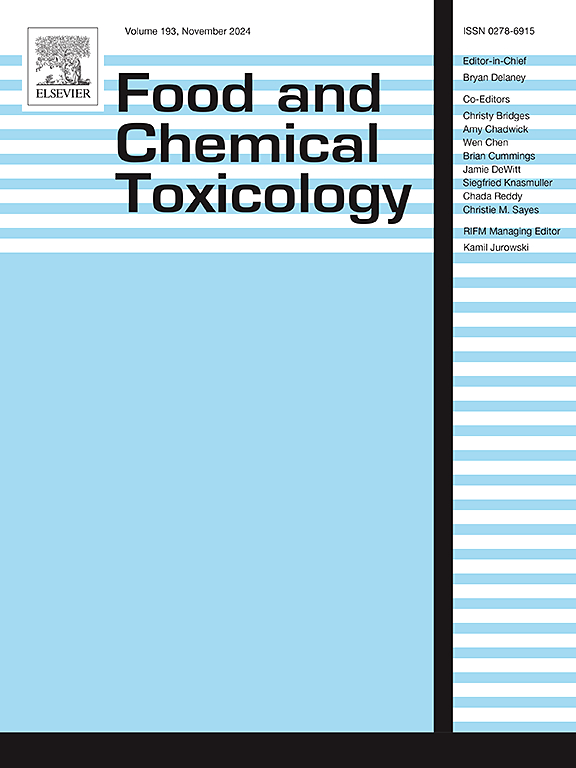Estimated long-term dietary exposure to cadmium from consumption of spinach in the United States: A probabilistic assessment
IF 3.9
3区 医学
Q2 FOOD SCIENCE & TECHNOLOGY
引用次数: 0
Abstract
As part of the U.S. Food and Drug Administration's (FDA's) Closer to Zero initiative, a toxicological reference value (TRV) for oral dietary exposure to Cd was established. Dietary exposure to Cd typically occurs at low levels over a pro-longed time period. With increased focus on food sources, it is necessary to refine the risk assessment process to quantify potential health risk from dietary exposure to Cd with greater precision. This study focused on dietary exposure to Cd from spinach consumption. A probabilistic method of bridging the National Health and Nutrition Examination Survey 24-hour dietary recalls and the National Eating Trends frequency data to estimate long-term (usual) spinach consumption was applied to estimate longer term (i.e., chronic) intake among the general U.S. population and young children (0–6 years). The resulting consumption distribution was combined with a database of Cd levels representative of spinach grown in the U.S. from 2014 to 2015 and 2017 to estimate long-term dietary exposure to Cd from spinach consumption. Mean dietary exposure to Cd ranged from 0.006 to 0.026 μg/kg bw/day and 0.018–0.110 μg/kg bw/day among the U.S. population and young children, respectively. Exposure estimates from spinach consumption alone were below the FDA TRV range.
求助全文
约1分钟内获得全文
求助全文
来源期刊

Food and Chemical Toxicology
工程技术-毒理学
CiteScore
10.90
自引率
4.70%
发文量
651
审稿时长
31 days
期刊介绍:
Food and Chemical Toxicology (FCT), an internationally renowned journal, that publishes original research articles and reviews on toxic effects, in animals and humans, of natural or synthetic chemicals occurring in the human environment with particular emphasis on food, drugs, and chemicals, including agricultural and industrial safety, and consumer product safety. Areas such as safety evaluation of novel foods and ingredients, biotechnologically-derived products, and nanomaterials are included in the scope of the journal. FCT also encourages submission of papers on inter-relationships between nutrition and toxicology and on in vitro techniques, particularly those fostering the 3 Rs.
The principal aim of the journal is to publish high impact, scholarly work and to serve as a multidisciplinary forum for research in toxicology. Papers submitted will be judged on the basis of scientific originality and contribution to the field, quality and subject matter. Studies should address at least one of the following:
-Adverse physiological/biochemical, or pathological changes induced by specific defined substances
-New techniques for assessing potential toxicity, including molecular biology
-Mechanisms underlying toxic phenomena
-Toxicological examinations of specific chemicals or consumer products, both those showing adverse effects and those demonstrating safety, that meet current standards of scientific acceptability.
Authors must clearly and briefly identify what novel toxic effect (s) or toxic mechanism (s) of the chemical are being reported and what their significance is in the abstract. Furthermore, sufficient doses should be included in order to provide information on NOAEL/LOAEL values.
 求助内容:
求助内容: 应助结果提醒方式:
应助结果提醒方式:


